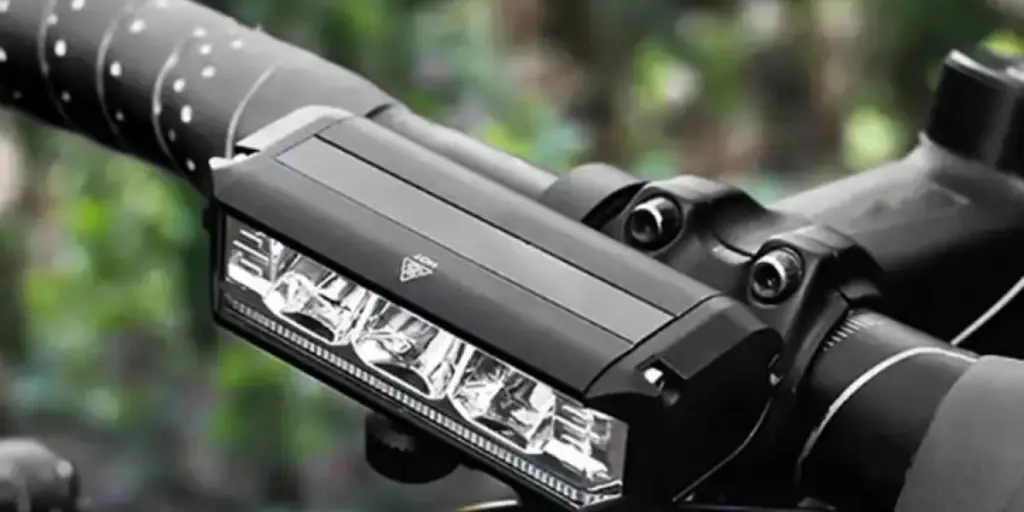In the realm of cycling, bicycle lighting has undergone a remarkable transformation, evolving from basic safety accessories to sophisticated, multifunctional devices. This evolution reflects not only advancements in technology but also a growing awareness of the critical role lights play in cyclist safety and visibility. Today’s bicycle lights are far more than mere illuminators of the path ahead; they are integral components that enhance the riding experience, offering features like high-intensity beams, energy-efficient LED technology, and smart, rechargeable power sources. These developments have made bicycle lights indispensable for riders navigating diverse environments, from bustling city streets to secluded rural paths, ensuring a safer and more confident cycling experience.
Table of Contents:
1. Spectrum of bicycle lights: Types and uses
2. Market insights: Trends and data in bicycle lighting
3. Criteria for selecting bicycle lights
4. Spotlight on 2024’s leading bicycle lights
5. Conclusion: Lighting the way forward
Spectrum of bicycle lights: Types and uses
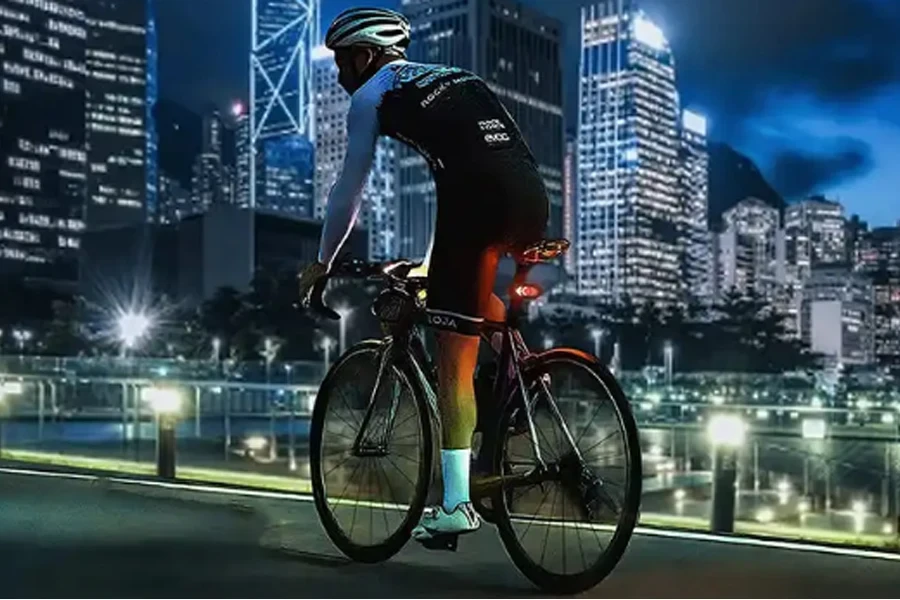
The spectrum of bicycle lights available today caters to a wide range of needs, each type designed with specific functionalities and applications in mind. This diversity is a response to the varied environments and conditions cyclists encounter.
Diverse types of bicycle lights
The market offers three primary categories of bicycle lights: front lights, rear lights, and comprehensive light sets. Front lights, essential for illuminating the path ahead, have evolved significantly. Modern front lights not only provide visibility but also enhance the rider’s ability to perceive road conditions, obstacles, and potential hazards. They range from basic models suitable for well-lit urban roads to high-intensity lights designed for unlit trails and rural paths.
Rear lights, on the other hand, are focused on ensuring the cyclist’s visibility to others on the road. These lights typically feature varying intensities and flashing modes to capture attention. Their design prioritizes visibility from a distance and at different angles, crucial for safety in traffic-heavy environments.
Light sets combine both front and rear lights, offering a harmonized solution. These sets are particularly beneficial for ensuring consistency in light quality and performance. They often come with features that allow for seamless integration into various bicycle models, catering to both casual riders and serious cyclists.
Practical applications
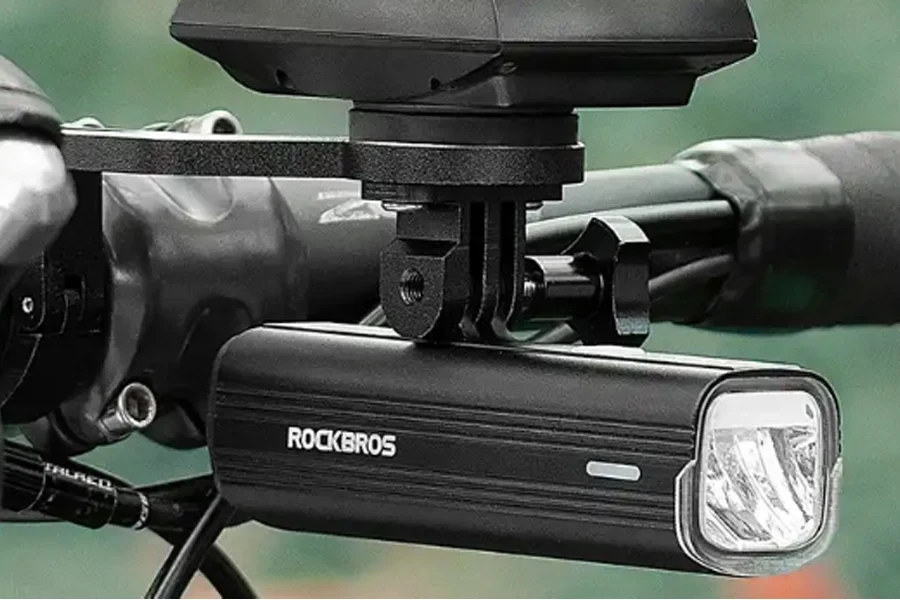
Each type of bicycle light serves distinct purposes, aligning with specific cycling scenarios. Front lights are indispensable for night riders and those traversing poorly lit areas. The high-lumen output models are particularly favored by off-road cyclists and those exploring rural or mountainous terrains, where natural light is minimal. These lights not only illuminate the path but also cast a wider beam to cover the peripheral areas, enhancing the overall safety of the ride.
Rear lights are crucial in urban settings, where cyclists share the road with a multitude of vehicles. Their flashing modes and bright LEDs are effective in capturing the attention of drivers, thereby reducing the risk of accidents. These lights are designed to be easily noticeable, even during daylight, making them a staple for city commuters.
Light sets offer a comprehensive lighting solution, ideal for those who require both front and rear illumination. They are particularly popular among new cyclists who might be outfitting their bikes for the first time, as well as seasoned riders looking for a coordinated set that guarantees compatibility and ease of use.
In summary, the choice of bicycle lights depends heavily on the intended use and the environment in which they will be employed. From enhancing visibility on busy city streets to navigating the challenges of off-road trails, the right lighting can significantly impact the safety and enjoyment of the ride. As the market continues to evolve, these lights not only serve as functional tools but also as a testament to the technological advancements in cycling accessories.
Market insights: Trends and data in bicycle lighting
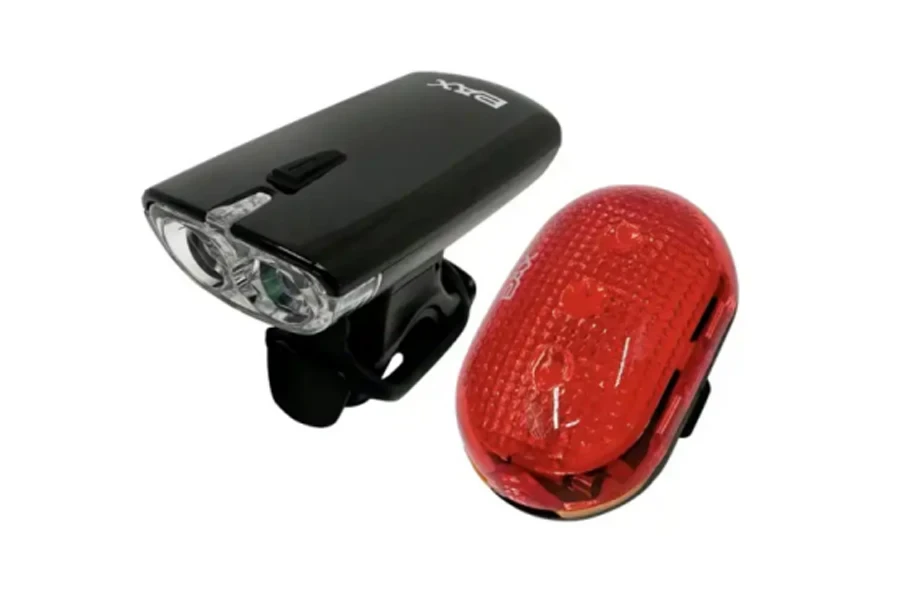
The bicycle lights market is experiencing a significant transformation, driven by evolving consumer preferences and technological advancements. This section delves into the current market dynamics and provides a statistical overview, drawing from recent data and trends.
Current market dynamics
The global bicycle lights market, valued at over USD 323.1 million in 2021, is witnessing a surge in demand, propelled by increasing investments in daytime running lights (DRL) and a growing interest in mountain biking. This trend is further fueled by the rising adoption of bicycles as a preferred mode of transportation, especially among health and environmentally conscious populations. The market is forecasted to grow at a CAGR of 8.45% during 2024-2032, reaching beyond USD 522.8 million by 2027.
The demand for durable, high-quality bicycle lights is augmenting market growth, with consumers seeking products that enhance safety and visibility. The COVID-19 pandemic has also played a role, as health concerns have led to a surge in mountain biking as a form of cardio workout, subsequently increasing the demand for bicycle lights. This trend is particularly noticeable in the United States, where mountain biking has gained considerable popularity.
Statistical overview
In terms of market segmentation, bicycle lights are categorized into headlights and taillights, with applications spanning mountain bicycles, commuting bicycles, and road bicycles. The product range includes LED lamps, low-cost battery lights, flashlights, halogen lights, HID lights, filament lights, and others. The market is bifurcated into online and offline sales channels, with each channel catering to different consumer preferences.
The growing demand for LED bicycle lights, known for their visibility and rechargeability, is a significant factor driving market growth. These lights are preferred for their cost-effectiveness, easy installation, and compatibility with lightweight bicycles. The market is also witnessing a shift towards innovative rechargeable lights that use solar energy, aligning with the increasing environmental consciousness among consumers.
Investments in DRL with diverse modes are gaining traction, as cyclists seek lights that offer optimal visibility during the day and night. Research activities are underway to develop bicycle lights that enhance visibility from a distance and illuminate the road without causing glare to other drivers. Such advancements are expected to fuel market growth further.
In conclusion, the bicycle lights market is poised for robust growth, driven by technological innovations, changing consumer preferences, and a heightened focus on safety and sustainability. The market’s evolution reflects a broader trend towards eco-friendly transportation and outdoor activities, positioning bicycle lights as essential accessories for modern cyclists.
Criteria for selecting bicycle lights
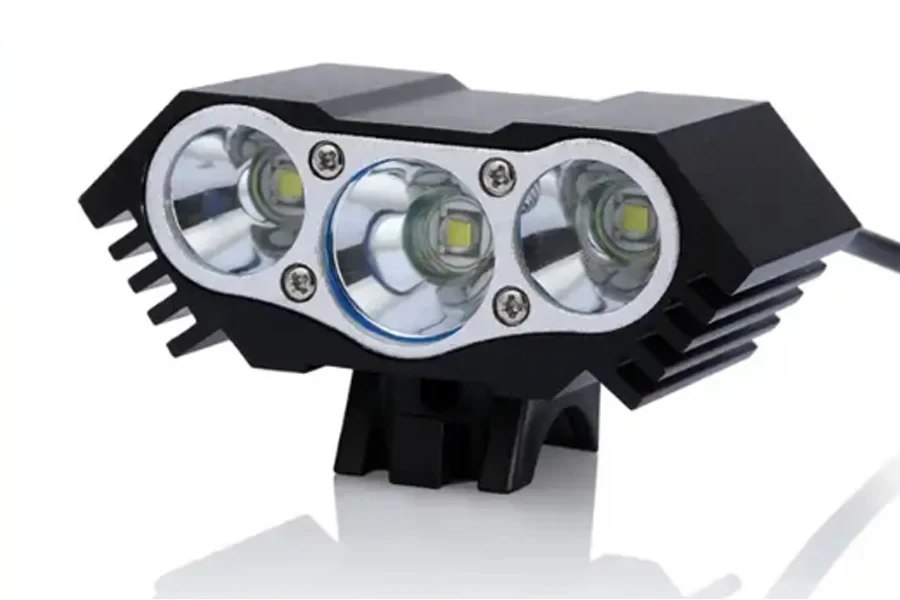
Selecting the right bicycle lights involves a nuanced understanding of various features and specifications. This section explores the key criteria that should guide the selection process, ensuring that the chosen lights meet the diverse needs of cyclists.
Assessing lumen output and beam quality
When selecting bicycle lights, understanding the lumen output and beam quality is crucial. Lumens measure the total amount of visible light emitted, with higher lumens indicating brighter lights. For well-lit urban areas, a light with 100-200 lumens is typically sufficient. However, for unlit roads or rural areas, cyclists should consider lights with 400-600 lumens for maximum visibility and safety.
Front lights generally require higher lumens than rear lights. While most rear lights range between 100 and 180 lumens, front lights need to be double this output for balanced visibility. The beam quality also plays a vital role. A well-angled beam should illuminate the path up to 10-20 meters ahead, focusing towards the ground and hitting the curb to avoid blinding pedestrians or other motorists. For higher speed riding, the light should be angled higher, and for slower speeds, it should be angled lower to ensure clear visibility of the road and its users.
The choice of light settings also impacts visibility. Flashing lights are more likely to grab attention than solid lights, making them a preferred choice for safety, especially on unlit roads. Some lights offer the versatility of switching between day and night modes, adjusting their brightness accordingly, which is ideal for cyclists who traverse both lit and unlit areas.
Battery life and charging options
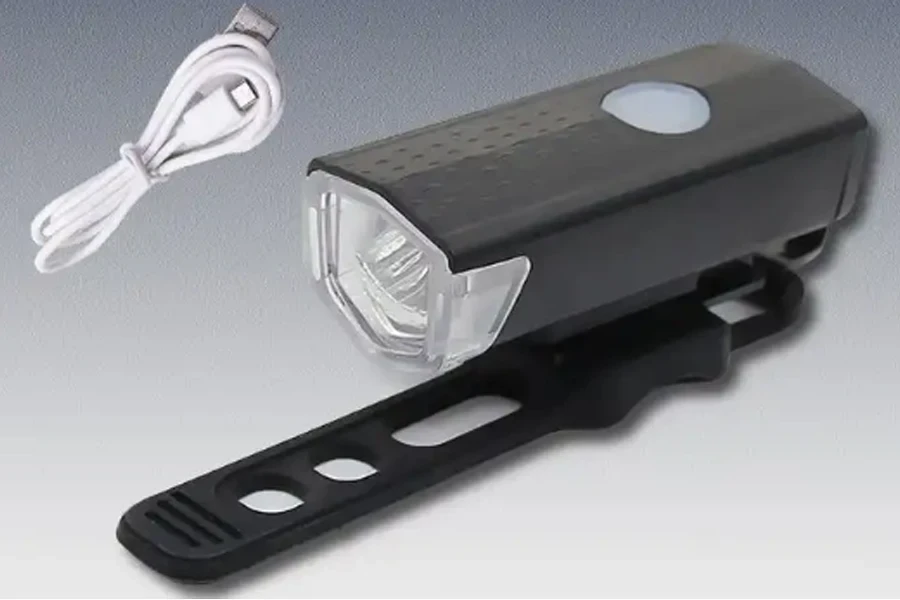
The battery life and charging options of bicycle lights are pivotal factors in their functionality and convenience. Modern bicycle lights predominantly use rechargeable lithium-ion batteries, known for their long run times and lightweight nature. These batteries can be charged hundreds of times, making them a cost-effective and environmentally friendly choice compared to disposable batteries.
Rechargeable systems typically feature a consistent light output until the battery is exhausted, unlike alkaline batteries that dim gradually. Most rechargeable lights come with a ‘fuel gauge’ or low-battery warning, and a power light to indicate available power. Lithium-ion batteries are characterized by their long run times and lack of ‘memory’ effects, meaning they don’t suffer reduced capacity from being fully discharged.
Maintaining the battery system is crucial for longevity. Most rechargeable batteries can withstand over 500 charge/discharge cycles. It’s important to fully charge the batteries, especially before storage, but not to overcharge them. Smart chargers that automatically stop when the batteries are fully charged are common, preventing overcharging. Inactive batteries lose charge over time, so it’s recommended to charge the system before each use.
The run time of a bicycle light depends on the battery type, the power of the system, and the type of LEDs used. A flashing light mode typically uses less battery power than a steady beam, making it a preferred choice for prolonged use. Most rechargeable units offer multiple settings, allowing cyclists to switch between low-power light for longer battery life and bright, high-intensity light for shorter durations. This versatility is particularly beneficial for cyclists who embark on long rides or face varying lighting conditions.
Durability and weather resistance
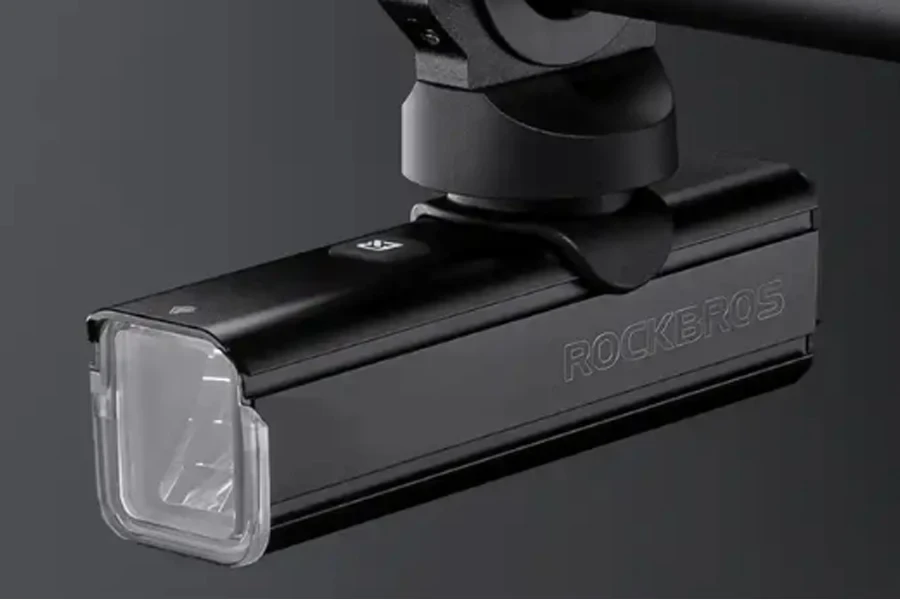
Durability and weather resistance are essential for ensuring the longevity of bicycle lights. Lights that are built to withstand harsh conditions, including rain, dust, and impact, offer greater reliability and value. Weather resistance is particularly important for cyclists who ride in varied climatic conditions. Features like water-resistant seals and robust construction materials are indicators of a light’s ability to endure challenging environments.
Mounting mechanisms and compatibility
The ease of installation and compatibility with different bicycle models are crucial for convenience and versatility. Lights with simple, tool-free mounting mechanisms allow for quick installation and removal, which is beneficial for cyclists who use multiple bikes. Compatibility with various handlebar sizes and shapes ensures that the lights can be used across different bicycle types, from road bikes to mountain bikes.
In summary, selecting the right bicycle lights requires careful consideration of lumen output, battery life, durability, and mounting options. By prioritizing these criteria, cyclists can ensure that their chosen lights provide optimal visibility, longevity, and ease of use, enhancing their riding experience across various conditions and environments.
Spotlight on 2024’s leading bicycle lights
The bicycle lights market in 2024 is brimming with innovative models, each designed to cater to specific needs and preferences of cyclists. This section highlights the top models in front and rear lights, as well as comprehensive light sets, focusing on their unique features and advancements.
Front light innovations
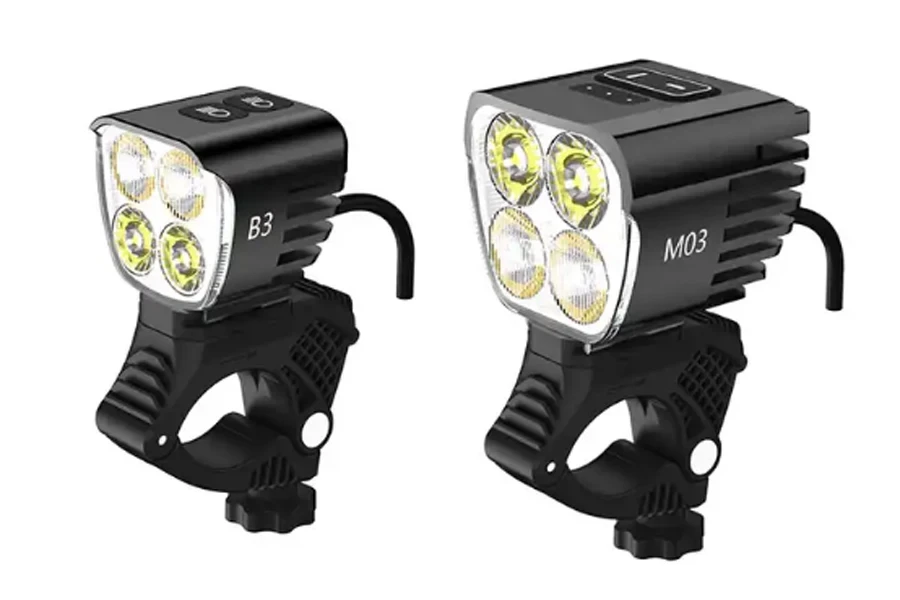
The 2024 market for front bicycle lights showcases a range of innovative models, each equipped with unique features to enhance the cycling experience. These lights not only provide essential illumination but also incorporate advanced technology for improved performance and safety.
Bontrager Ion Pro RT
The Bontrager Ion Pro RT, available for around $100, is a standout model with a claimed maximum output of 1,300 lumens. This light is designed for both road cycling and commuting, offering a warm-colored and well-shaped beam that enhances visibility without causing discomfort to other road users. Its Bluetooth compatibility allows for integration with devices like Garmin or Di2 shifters, adding a layer of convenience and tech-savvy control. The clamp is user-friendly, and the light’s operation is straightforward, making it a top choice for cyclists who value both performance and ease of use.
Lezyne Macro Drive 1400+
Another notable front light is the Lezyne Macro Drive 1400+, known for its robust build and high output. With a claimed maximum output of 1,400 lumens and a run time of up to 3 hours on maximum power, this light is ideal for cyclists who ride in a variety of lighting conditions. The light beam has a central focus, providing clear illumination of the road ahead, while also offering peripheral lighting to enhance overall visibility. Its USB-C charging port and feature-rich design make it a competitive option in the market.
Magicshine Ray 2600B Smart Remote Bike Light
The Magicshine Ray 2600B Smart Remote Bike Light stands out with its impressive 2,600-lumen output and dual-beam pattern. This light is particularly suitable for night riding, offering enough power to illuminate dark trails and gravel tracks. It features auto-dimming technology and can be paired with an app for customizable modes and features. The inclusion of a handlebar remote for quick brightness adjustments adds to its appeal, especially for off-road enthusiasts.
Exposure Race Mk17
The Exposure Race Mk17 is another front-runner in the market, with a claimed maximum output of 1,700 lumens in Reflex mode. It offers a robust design and a powerful beam, backed by impressive battery life. Although the clamp can be a bit fiddly and the charging cable is proprietary, its performance for road and gravel night riding is exceptional.
In summary, the front light segment in 2024 is characterized by a blend of high lumen outputs, innovative features, and user-friendly designs. These lights not only ensure visibility and safety but also enhance the overall riding experience through their advanced functionalities. Whether for urban commuting, road cycling, or off-road adventures, there is a front light model available to meet the specific needs of every cyclist.
Rear light advancements

The advancements in rear bicycle lights for 2024 are marked by a focus on enhanced visibility, longer battery life, and innovative features. These lights are crucial for safety, ensuring that cyclists are visible to other road users from behind.
Magicshine SEEMEE300
The Magicshine SEEMEE300 stands out as a top choice for rear lights. It boasts an impressive 300-lumen output with a 360-degree visibility angle, ensuring cyclists are seen from all sides. The light features an in-built accelerometer that brightens when braking, enhancing safety during sudden stops. Its battery life is exceptional, with up to 40 hours on a low setting of 20 lumens, and 6 hours on the highest constant setting. The SEEMEE300 also projects a circle of light onto the ground, increasing visibility. Its mounting system is highly praised for its ease of use and versatility, fitting a variety of seatpost depths.
Knog Mid Cobber Rear Bike Light
The Knog Mid Cobber Rear Bike Light is renowned for its 330-degree visibility, thanks to the main light body’s design. It offers a super bright 170-lumen flash, making it highly visible in various lighting conditions. The light’s cableless charging feature adds to its convenience, though opinions on this feature may vary. Its unique selling points, including the wide-angle visibility and bright flash, make it a preferred choice despite being the most expensive in its category.
Topeak Taillux 100 USB
For value-focused cyclists, the Topeak Taillux 100 USB is an excellent option. It doesn’t have advanced features like ambient light detection or an accelerometer but offers a solid range of light modes. From a 100-lumen flash to a combination of constant beam and flashing parameter, it provides versatility. In its consistent/flashing mode, the battery life is a respectable 10 hours, making it a reliable performer at an affordable price.
In summary, the rear light segment in 2024 offers a variety of options catering to different needs. From the high-tech and feature-rich Magicshine SEEMEE300 to the value-oriented Topeak Taillux 100 USB, cyclists can choose lights based on their specific requirements for visibility, battery life, and additional features. These advancements in rear lights not only enhance safety but also add convenience and versatility to the cycling experience.
Comprehensive light sets
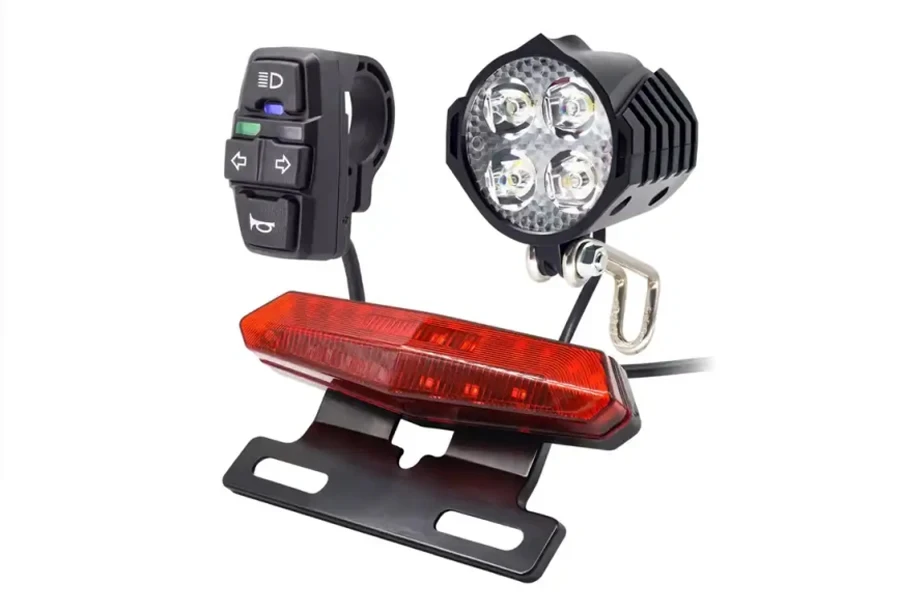
Comprehensive light sets in 2024 offer cyclists a balanced and integrated solution for both front and rear lighting. These sets are designed for ease of use, compatibility, and feature-rich performance, making them ideal for a variety of cycling needs.
Bontrager Ion 200 RT and Flare RT Set
The Bontrager Ion 200 RT and Flare RT set stands out for its balanced combination of front and rear lighting. The front light, Ion 200 RT, offers a maximum output of 200 lumens, suitable for urban riding and ensuring visibility in low-light conditions. The rear light, Flare RT, provides a bright 90-lumen output with a wide visibility angle, making it highly effective in catching the attention of motorists. This set is known for its ease of use, with simple mounting systems and compatibility with various bicycle types. The lights feature multiple modes, including day and night settings, and are USB rechargeable, offering convenience and versatility.
Lezyne Macro Drive 1300XXL and Strip Drive Rear Set
Another notable set is the Lezyne Macro Drive 1300XXL and Strip Drive Rear combination. The Macro Drive 1300XXL front light delivers a powerful 1300-lumen output, ideal for unlit roads and trails. It features a robust build and a beam with a central focus for clear road illumination. The Strip Drive Rear light complements the front light with its 150-lumen output and wide-angle visibility. This set is praised for its durability, multiple lighting modes, and USB-C charging, making it a strong contender for cyclists seeking reliable and high-performance lighting.
Specialized Flux 1250 and Stix Elite Set
The Specialized Flux 1250 and Stix Elite set offers a mix of spot and flood beams from the front light, providing both a broad beam and a more focused reach. The Flux 1250 front light has a 1250-lumen output, suitable for both urban and rural riding. The Stix Elite rear light complements the front light with its compact design and multiple modes for visibility. This set is known for its robust construction, quick charging, and IP67 waterproofing, making it a great all-condition option.
In summary, comprehensive light sets in 2024 provide cyclists with a harmonized solution for front and rear lighting. These sets combine ease of use, versatility, and advanced features, catering to the diverse needs of cyclists. Whether for safety, visibility, or convenience, these sets offer an array of features to enhance the cycling experience.
The bicycle lights market in 2024 offers a range of options, from high-output front lights for trail riding to versatile rear lights for urban commuting. The advancements in technology have led to more efficient, brighter, and smarter lighting solutions, catering to the diverse needs of cyclists. Whether for safety, visibility, or convenience, the latest models provide an array of features to enhance the cycling experience.
Conclusion: Lighting the way forward
The bicycle lights market in 2024 presents a landscape rich in technological advancements and diverse options, catering to the varied needs of cyclists. From high-lumen front lights enhancing night-time trail visibility to innovative rear lights ensuring safety in urban traffic, the choices are extensive. Comprehensive light sets offer balanced solutions, combining front and rear lighting needs with ease of use and compatibility. These developments not only reflect the growing demand for cycling safety but also indicate a future where cycling accessories like lights play a pivotal role in enhancing the overall riding experience, offering both functionality and convenience.
